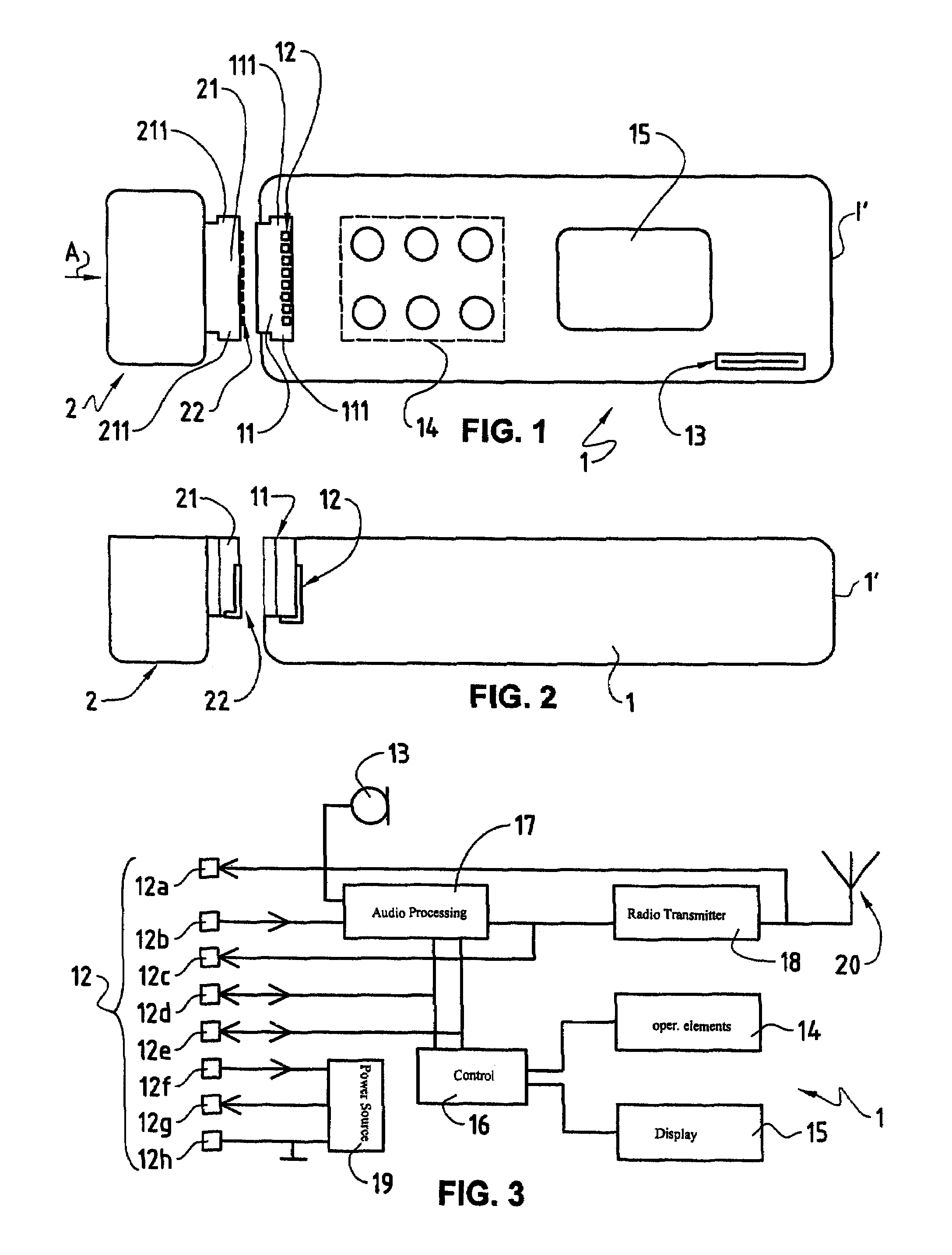Wireless microphone
a wireless microphone and microphone technology, applied in the field of wireless microphones, can solve the problems of not always within the reach of users of wireless microphones, inconvenient use, and inability to connect wires, and achieve the effect of easy adapting the functionality
- Summary
- Abstract
- Description
- Claims
- Application Information
AI Technical Summary
Benefits of technology
Problems solved by technology
Method used
Image
Examples
Embodiment Construction
[0016]In the following description the term audio signal refers to acoustic signals audible to humans, typically in the range of 100 Hz to 8 KHz or, in the case of high fidelity electronic devices, in the extended range of 20 Hz to 20 KHz. The term electrical audio signal refers to electrical signals representing audio signals in analogue or encoded form.
[0017]In the FIGS. 1, 2 and 3, the reference numeral 1 refers to a wireless microphone having a housing 1′ and a microphone element 13 for receiving audio signals from sound sources. As can be seen in FIGS. 1 and 3, the wireless microphone 1 also includes user interface comprising operating elements 14, such as push buttons, and a display 15.
[0018]As is illustrated in FIGS. 1 and 2, the wireless microphone 1 comprises a coupling element 11 for detachably fixing an interchangeable functional module 2 to the wireless microphone 1. The coupling element 11 is designed to fix the interchangeable functional module 2 to the wireless microp...
PUM
 Login to View More
Login to View More Abstract
Description
Claims
Application Information
 Login to View More
Login to View More - R&D
- Intellectual Property
- Life Sciences
- Materials
- Tech Scout
- Unparalleled Data Quality
- Higher Quality Content
- 60% Fewer Hallucinations
Browse by: Latest US Patents, China's latest patents, Technical Efficacy Thesaurus, Application Domain, Technology Topic, Popular Technical Reports.
© 2025 PatSnap. All rights reserved.Legal|Privacy policy|Modern Slavery Act Transparency Statement|Sitemap|About US| Contact US: help@patsnap.com


